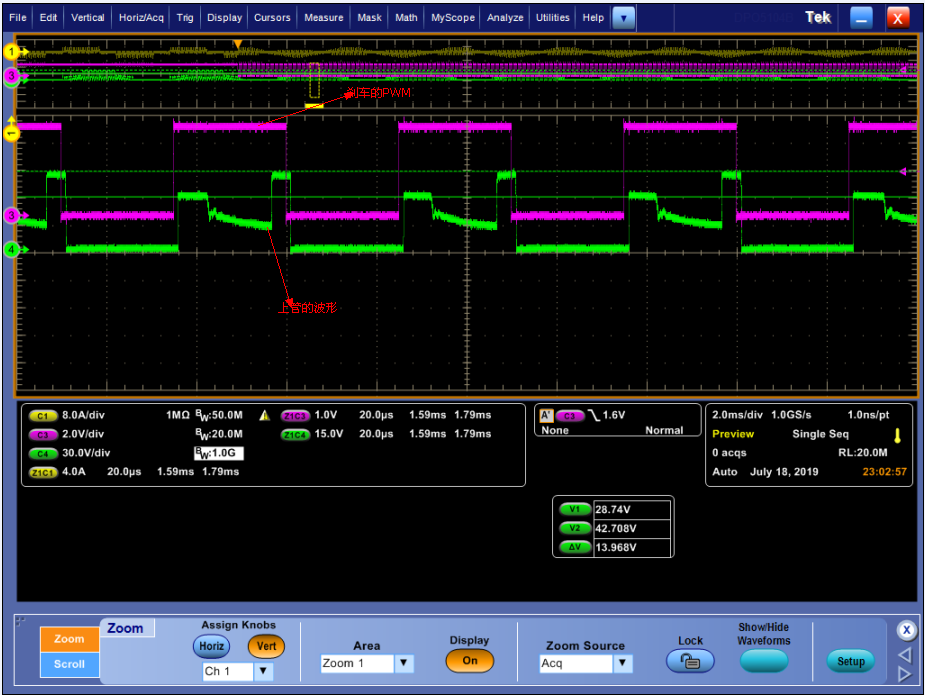The 1x mode of drv8323 is used to drive the motor in asynchronous mode, which causes the motor to slow down too slowly.
Direct brake, the motor will brake to zero speed in a very short period of time, our application can not appear the state of motor shutdown, so direct brake mode is not desirable.
Therefore, we want to modulate brake in PWM mode, so that the motor can not decelerate too fast, nor slower than 1X asynchronism.
However, there are some abnormal situations in the testing process:
The PWM carrier frequency of DRV8323 is 20KHZ, and that of Brake is 20KHZ.Due to the asynchronous relationship between the two groups of PWM, the following waveforms appear.
Among them, motor drive is 30% duty cycle, brake is braked with 50% duty cycle. During braking, CPU does not stop output 30% duty cycle of driving motor. This leads to about 8% of motor drives being effective before brake works. It's the equivalent of driving a car by stepping on the accelerator and brakes back and forth.
Questions:
1. Is this kind of brake whose duty cycle of motor-driven output is not zero legitimate?
2. If it's not legal, we want to use another way. When the motor needs to decelerate quickly, we need to modify the internal register of DRV8323, change the mode to synchronous mode, and accelerate the braking speed. When the speed stabilizes, we need to modify the internal register of DRV8323 again, and change the mode back to asynchronous mode; that is to say, only when the speed stabilizes, we can change the internal register of DRV8323 to asynchronous mode. Synchronization mode is used when decelerating and asynchronization mode is used at other times. Is this temporary mode change legal?
ps:We use asynchronous mode to reduce the temperature rise of the motor.


